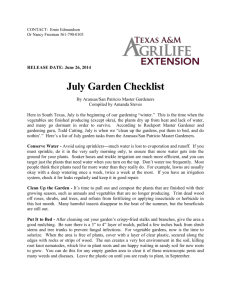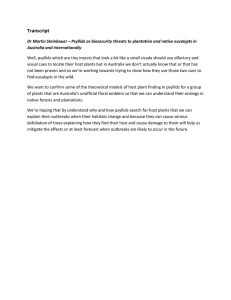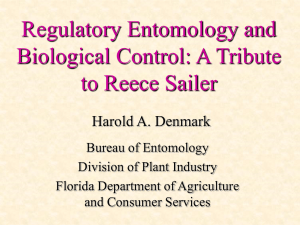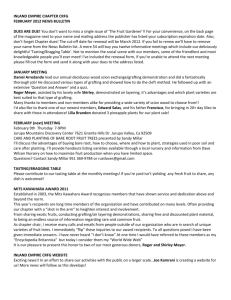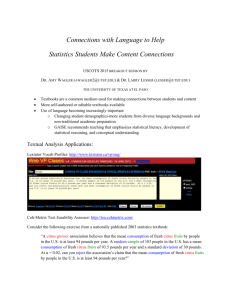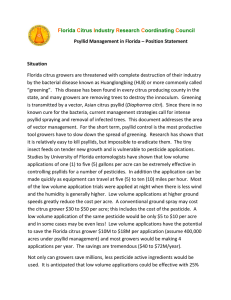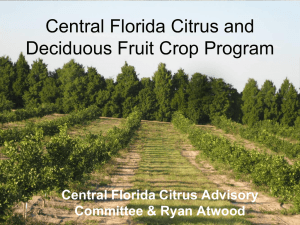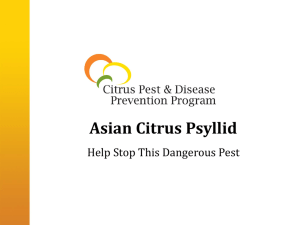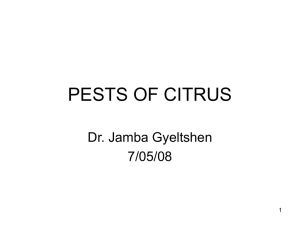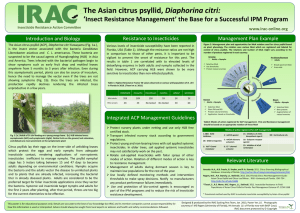Abstract Example - Citrus Research Board
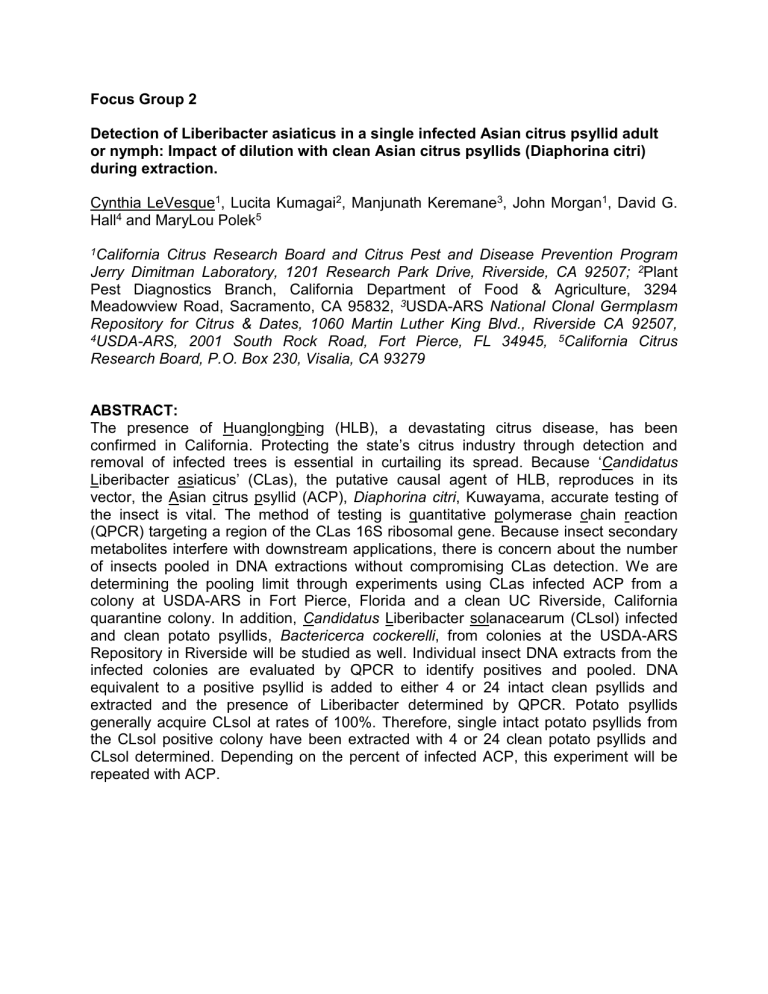
Focus Group 2
Detection of Liberibacter asiaticus in a single infected Asian citrus psyllid adult or nymph: Impact of dilution with clean Asian citrus psyllids (Diaphorina citri) during extraction.
Cynthia LeVesque 1 , Lucita Kumagai 2 , Manjunath Keremane 3 , John Morgan 1 , David G.
Hall 4 and MaryLou Polek 5
1 California Citrus Research Board and Citrus Pest and Disease Prevention Program
Jerry Dimitman Laboratory, 1201 Research Park Drive, Riverside, CA 92507; 2 Plant
Pest Diagnostics Branch, California Department of Food & Agriculture, 3294
Meadowview Road, Sacramento, CA 95832, 3 USDA-ARS National Clonal Germplasm
Repository for Citrus & Dates, 1060 Martin Luther King Blvd., Riverside CA 92507,
4 USDA-ARS, 2001 South Rock Road, Fort Pierce, FL 34945, 5 California Citrus
Research Board, P.O. Box 230, Visalia, CA 93279
ABSTRACT:
The presence of Huanglongbing (HLB), a devastating citrus disease, has been confirmed in California.
Protecting the state’s citrus industry through detection and removal of infected trees is essential in curtailing its spread. Because ‘ Candidatus
Liberibacter as iaticus’ (CLas), the putative causal agent of HLB, reproduces in its vector, the Asian citrus psyllid (ACP), Diaphorina citri , Kuwayama, accurate testing of the insect is vital. The method of testing is quantitative polymerase chain reaction
(QPCR) targeting a region of the CLas 16S ribosomal gene. Because insect secondary metabolites interfere with downstream applications, there is concern about the number of insects pooled in DNA extractions without compromising CLas detection. We are determining the pooling limit through experiments using CLas infected ACP from a colony at USDA-ARS in Fort Pierce, Florida and a clean UC Riverside, California quarantine colony. In addition, Candidatus Liberibacter solanacearum (CLsol) infected and clean potato psyllids, Bactericerca cockerelli , from colonies at the USDA-ARS
Repository in Riverside will be studied as well. Individual insect DNA extracts from the infected colonies are evaluated by QPCR to identify positives and pooled. DNA equivalent to a positive psyllid is added to either 4 or 24 intact clean psyllids and extracted and the presence of Liberibacter determined by QPCR. Potato psyllids generally acquire CLsol at rates of 100%. Therefore, single intact potato psyllids from the CLsol positive colony have been extracted with 4 or 24 clean potato psyllids and
CLsol determined. Depending on the percent of infected ACP, this experiment will be repeated with ACP.
